Jialun Xiong’s design of Sichuan Impression is a sophisticated take on family-style dining
Jialun Xiong imbues the Alhambra, Los Angeles restaurant with clean lines and nods to traditional Chinese architecture
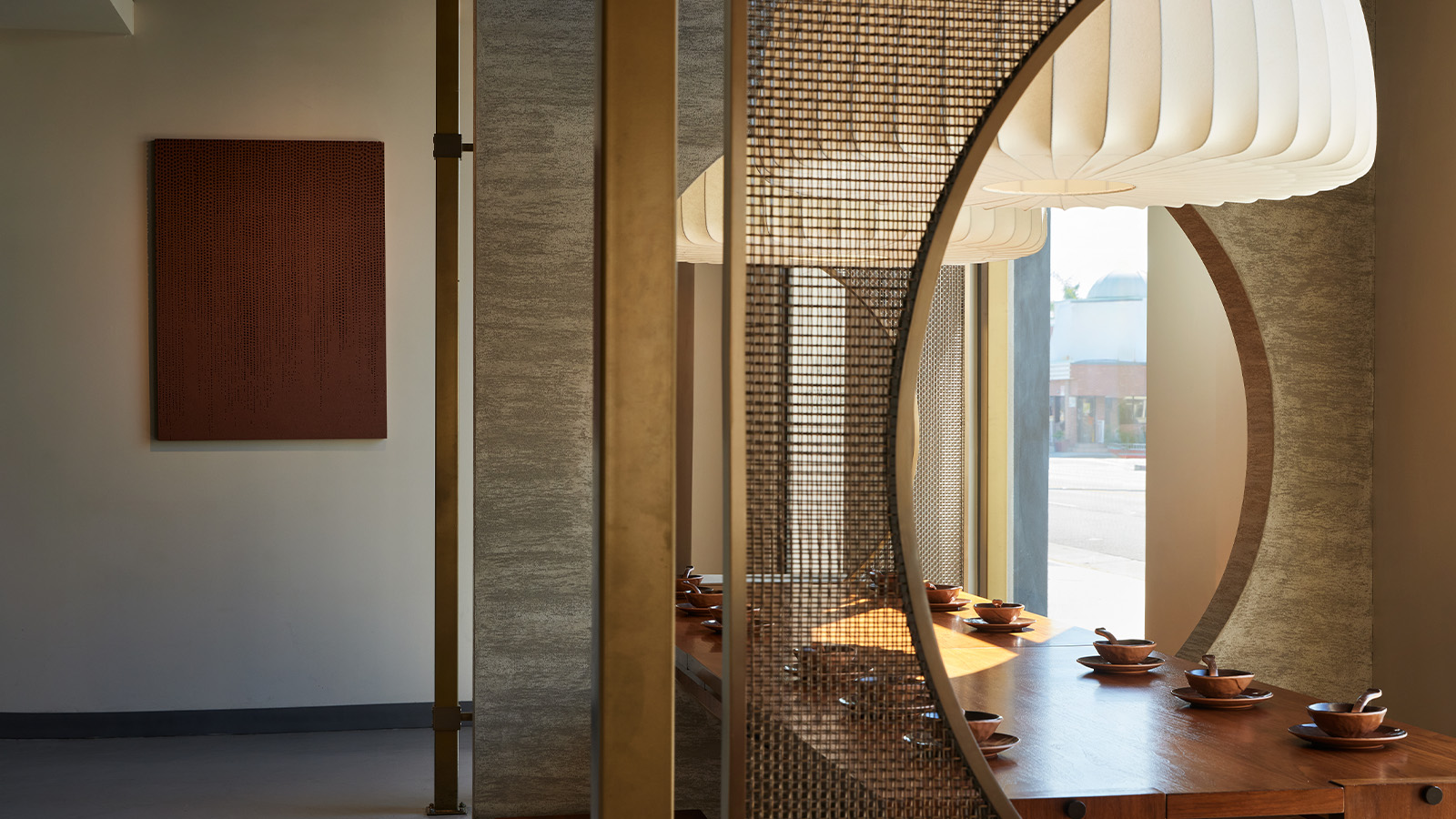
Whether crafting pared-back furnishings or staging a sleek interior, Los Angeles-based designer Jialun Xiong (featured in the Wallpaper* USA 300, our guide to creative America) looks to distil and coalesce different reference points. Born in Chongqing, China, the up-and-comer infuses her high-concept designs with the duality of restraint and graphical boldness. She achieves this by remaining resolute in what needs to be accomplished. Perhaps, nowhere is that better demonstrated than in her recent outfitting of the third Sichuan Impression restaurant, in Alhambra, Los Angeles.
Jialun Xiong dresses new Sichuan Impression in Alhambra, Los Angeles

Situated in the hip Los Angeles neighbourhood of Alhambra, the sprawling 2,000 sq ft (185 sq m) bistro, serves up a regional fare in a minimalist and textured setting that folds in evocations of traditional Chinese architecture. Throughout the strategically partitioned space, rustic materials are harnessed in refined geometries and clean lines. An earth-tone colour palette sets the stage for an almost collage-like composition of architectural elements – layering in different textures and intensities of detail. As with many of her projects, there's a certain harmony in juxtaposing and melding opposing forces.
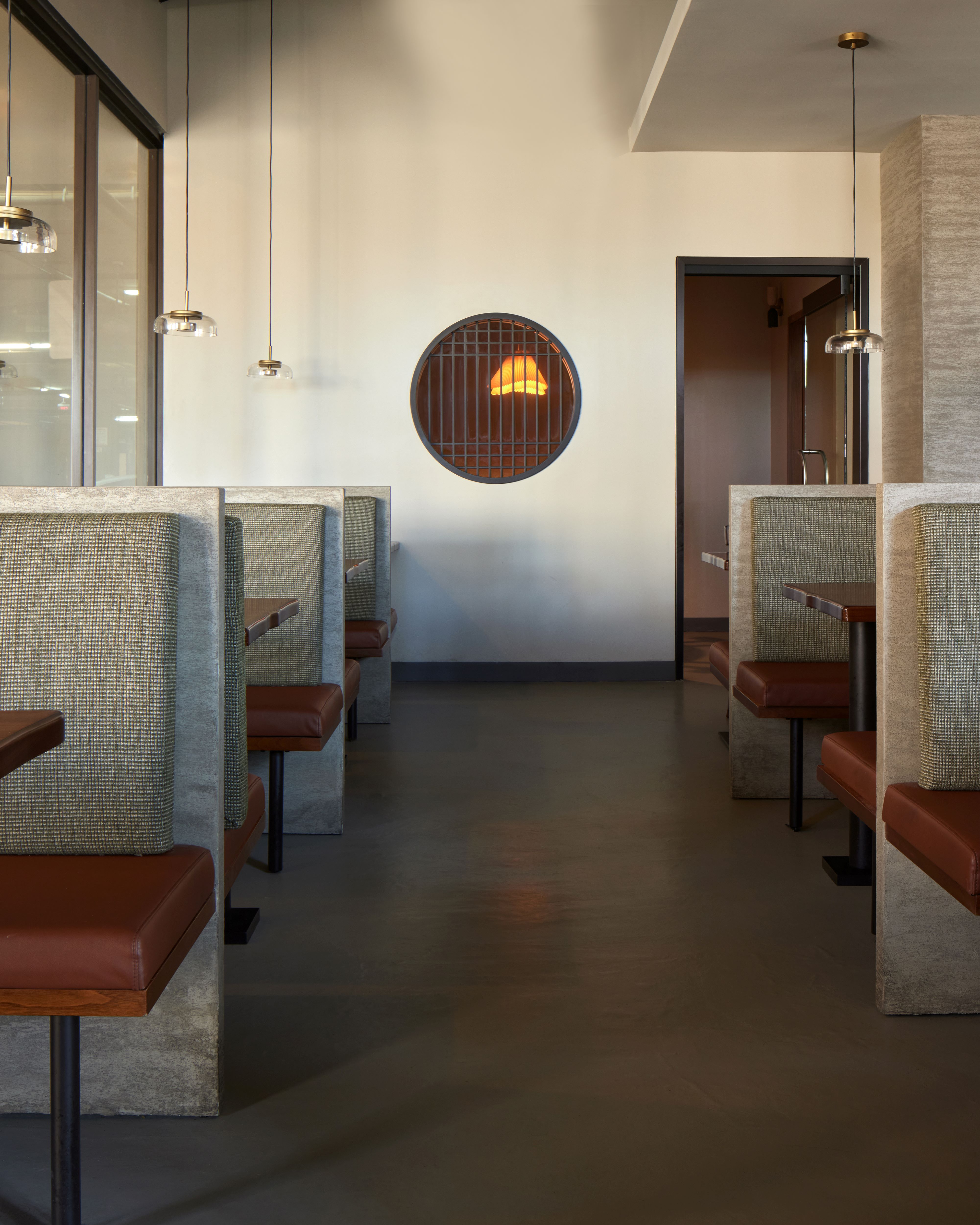
'I approach all of my designs with intentionality, but it’s especially top-of-mind when I'm creating environments that people are going to spend a long time in,' says Xiong. 'For Sichuan Impression, I chose a muted palette and natural materials to encourage guests to look a little longer and uncover the intricacies that aren't so obvious at first glance. I believe good design doesn’t always have to be instantly recognisable, it can simply blend in.'
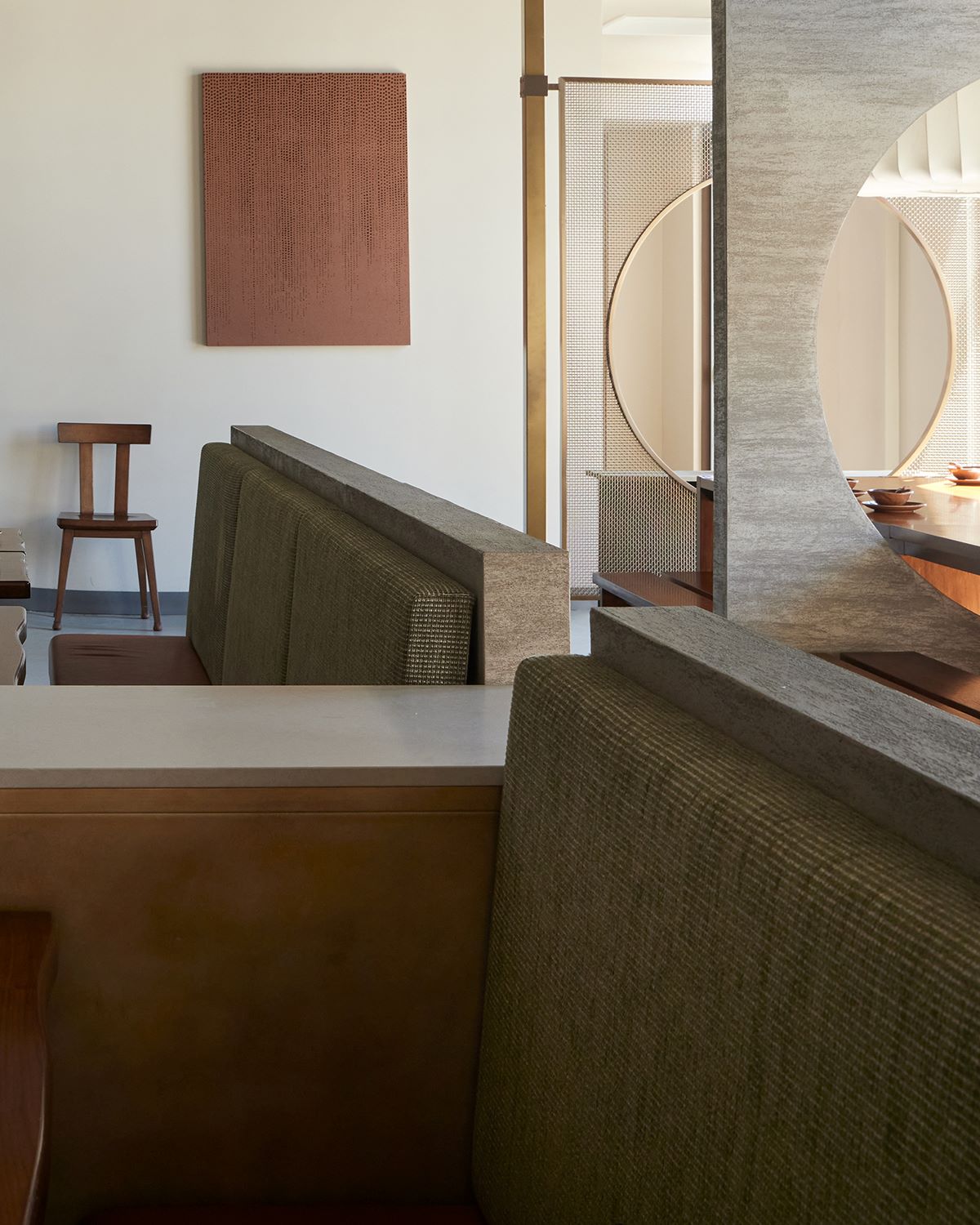
Throughout the stratified interior, half walls and semi-permeable surfaces help establish a hierarchy of space. Four family-style seatings are delineated by almost mono-material articulations of walnut, plaster, and antique brass. Circular cut-aways in thick plaster, and metal mesh partition walls make for an enfilade effect that appears to be a triple reflection. Xiong's goal was to offer visual engagement without overstimulating the senses. Raw silk cloth chandeliers hang over each zone and translate directly from the iconic form and structure of traditional Chinese lanterns.
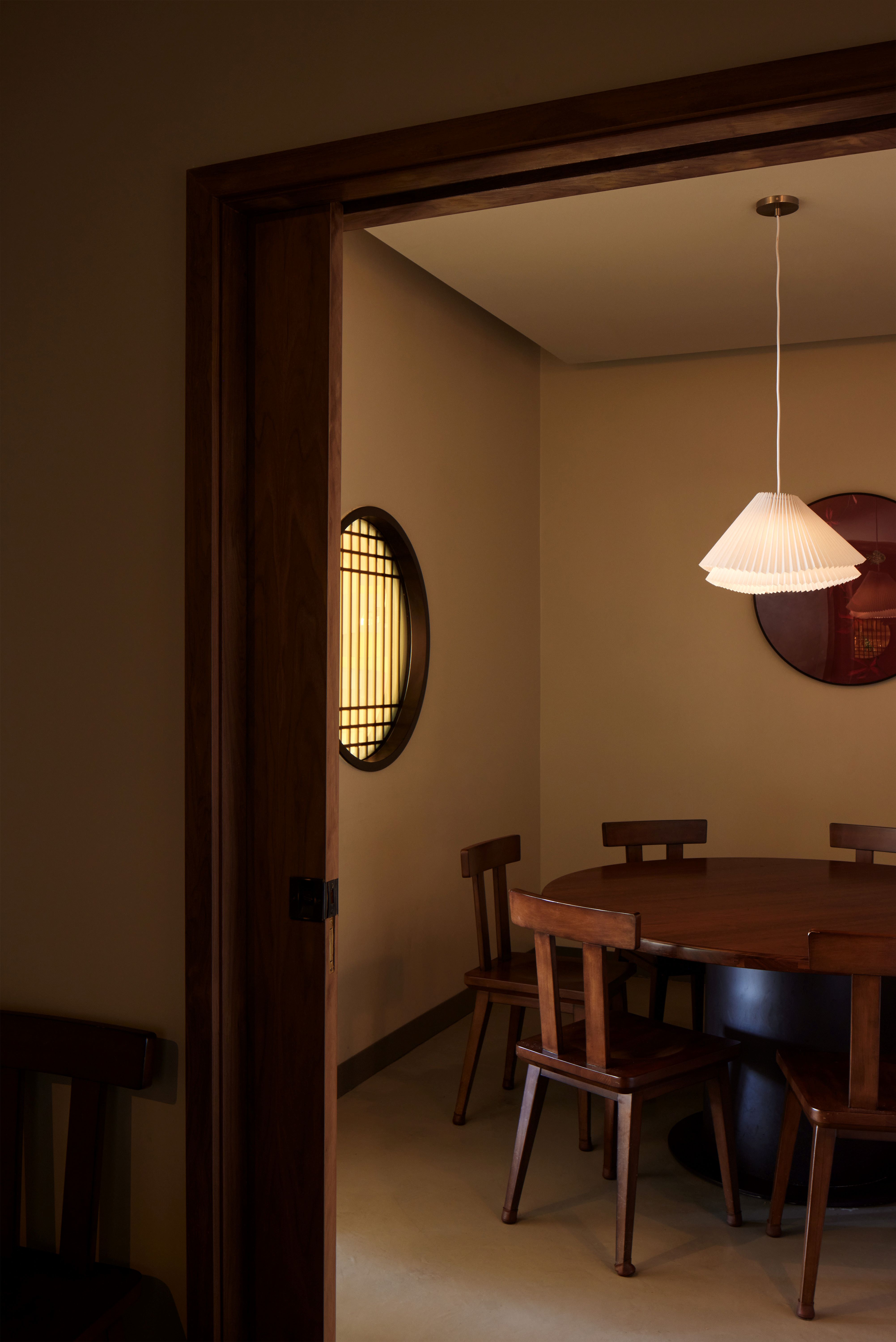
Suggestive of bamboo – a popular material in Sichuan, green-upholstered banquettes anchor into additional rectilinear booths. Implemented for its reddish tone, walnut is hewn into custom tables with live edges, indicating a sense of timelessness. Customers can choose between more intimate and open-plan dining experiences.
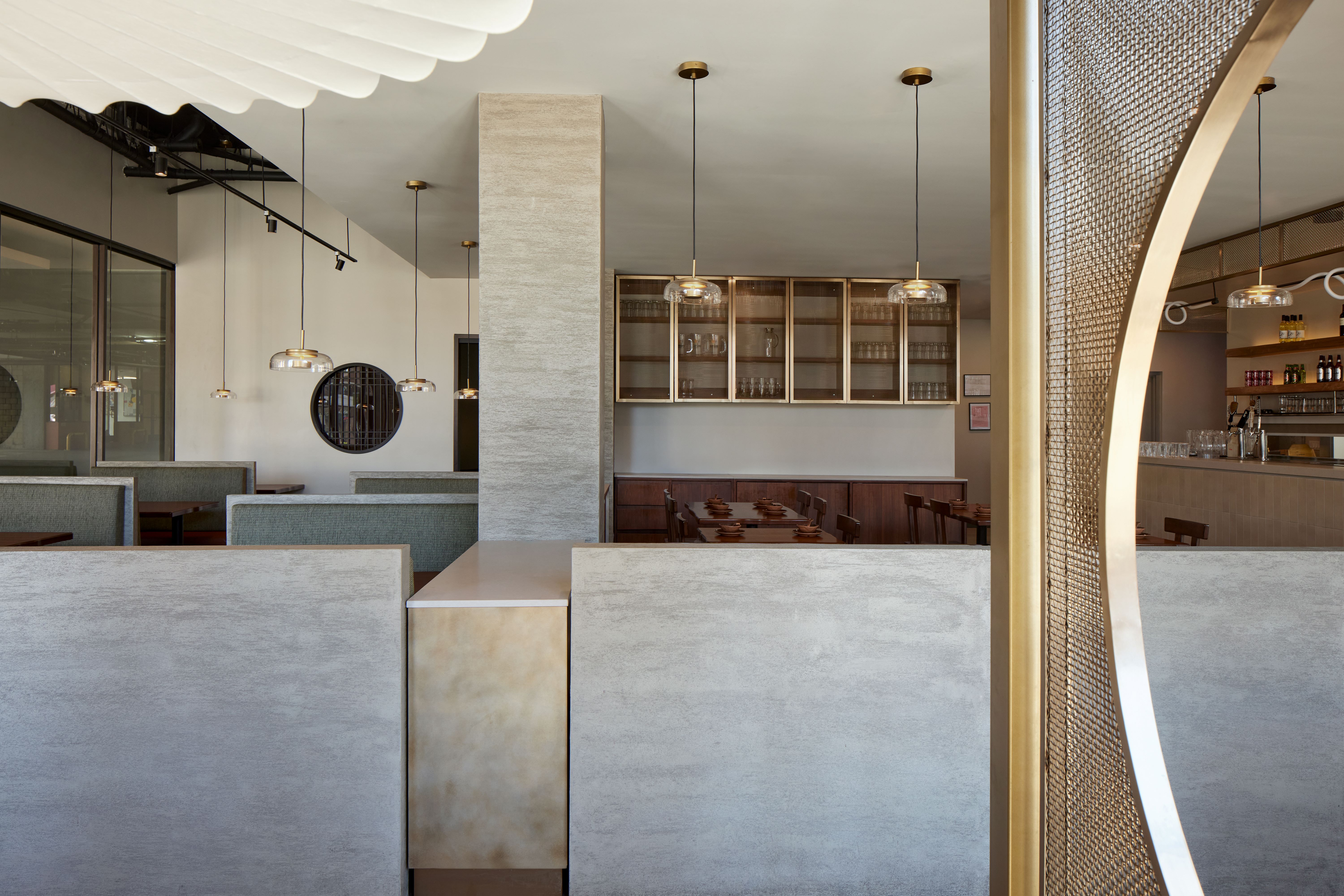
While a floating metal cabinet delimiting the bar adds more cubic complexity to the main restaurant, a private dining room toward the rear takes on even more regional specificity. Circular openings are generously framed in dark woods and joined by off-white walls and floors. This room has a more domestic feel. Overall, Xiong's scheme is a testament to the fact that minimalism doesn't always have to be stark and cold, or disconnected from reference.
Wallpaper* Newsletter
Receive our daily digest of inspiration, escapism and design stories from around the world direct to your inbox.
Adrian Madlener is a Brussels-born, New York-based writer, curator, consultant, and artist. Over the past ten years, he’s held editorial positions at The Architect’s Newspaper, TLmag, and Frame magazine, while also contributing to publications such as Architectural Digest, Artnet News, Cultured, Domus, Dwell, Hypebeast, Galerie, and Metropolis. In 2023, He helped write the Vincenzo De Cotiis: Interiors monograph. With degrees from the Design Academy Eindhoven and Parsons School of Design, Adrian is particularly focused on topics that exemplify the best in craft-led experimentation and sustainability.
-
 Marylebone restaurant Nina turns up the volume on Italian dining
Marylebone restaurant Nina turns up the volume on Italian diningAt Nina, don’t expect a view of the Amalfi Coast. Do expect pasta, leopard print and industrial chic
By Sofia de la Cruz
-
 Tour the wonderful homes of ‘Casa Mexicana’, an ode to residential architecture in Mexico
Tour the wonderful homes of ‘Casa Mexicana’, an ode to residential architecture in Mexico‘Casa Mexicana’ is a new book celebrating the country’s residential architecture, highlighting its influence across the world
By Ellie Stathaki
-
 Jonathan Anderson is heading to Dior Men
Jonathan Anderson is heading to Dior MenAfter months of speculation, it has been confirmed this morning that Jonathan Anderson, who left Loewe earlier this year, is the successor to Kim Jones at Dior Men
By Jack Moss
-
 Seven things not to miss on your sunny escape to Palm Springs
Seven things not to miss on your sunny escape to Palm SpringsIt’s a prime time for Angelenos, and others, to head out to Palm Springs; here’s where to have fun on your getaway
By Carole Dixon
-
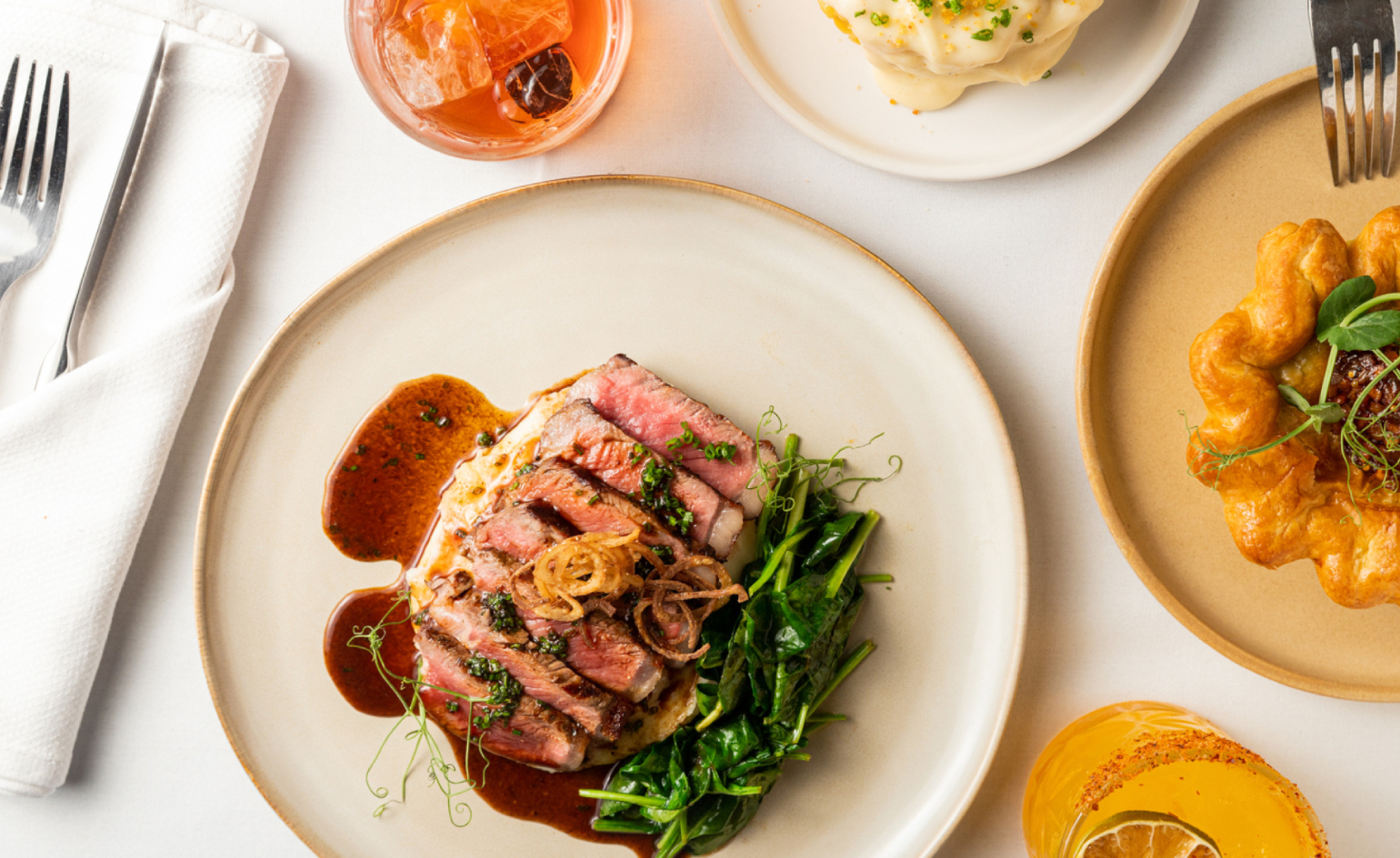 At Linden Los Angeles, classic New York comfort food gets its due
At Linden Los Angeles, classic New York comfort food gets its dueThe restaurant, inspired by a stretch of boulevard bridging Brooklyn and Queens, honors legacy, community and pleasure
By Carole Dixon
-
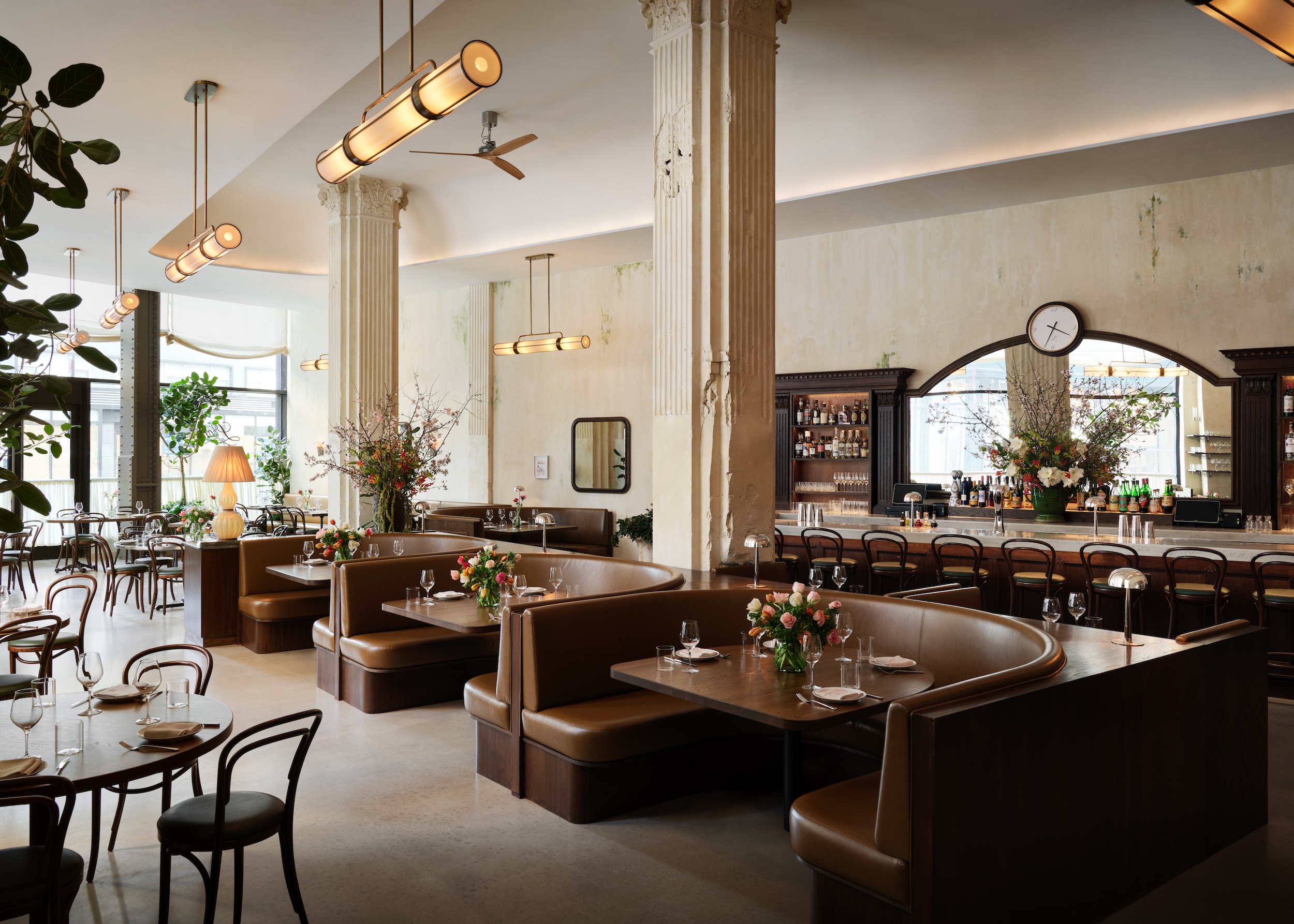 This atmospheric New York restaurant was designed to be a ‘beautiful ruin’
This atmospheric New York restaurant was designed to be a ‘beautiful ruin’At Leon’s, classic Italian fare comes with a North African accent and with a side of family history
By Anna Fixsen
-
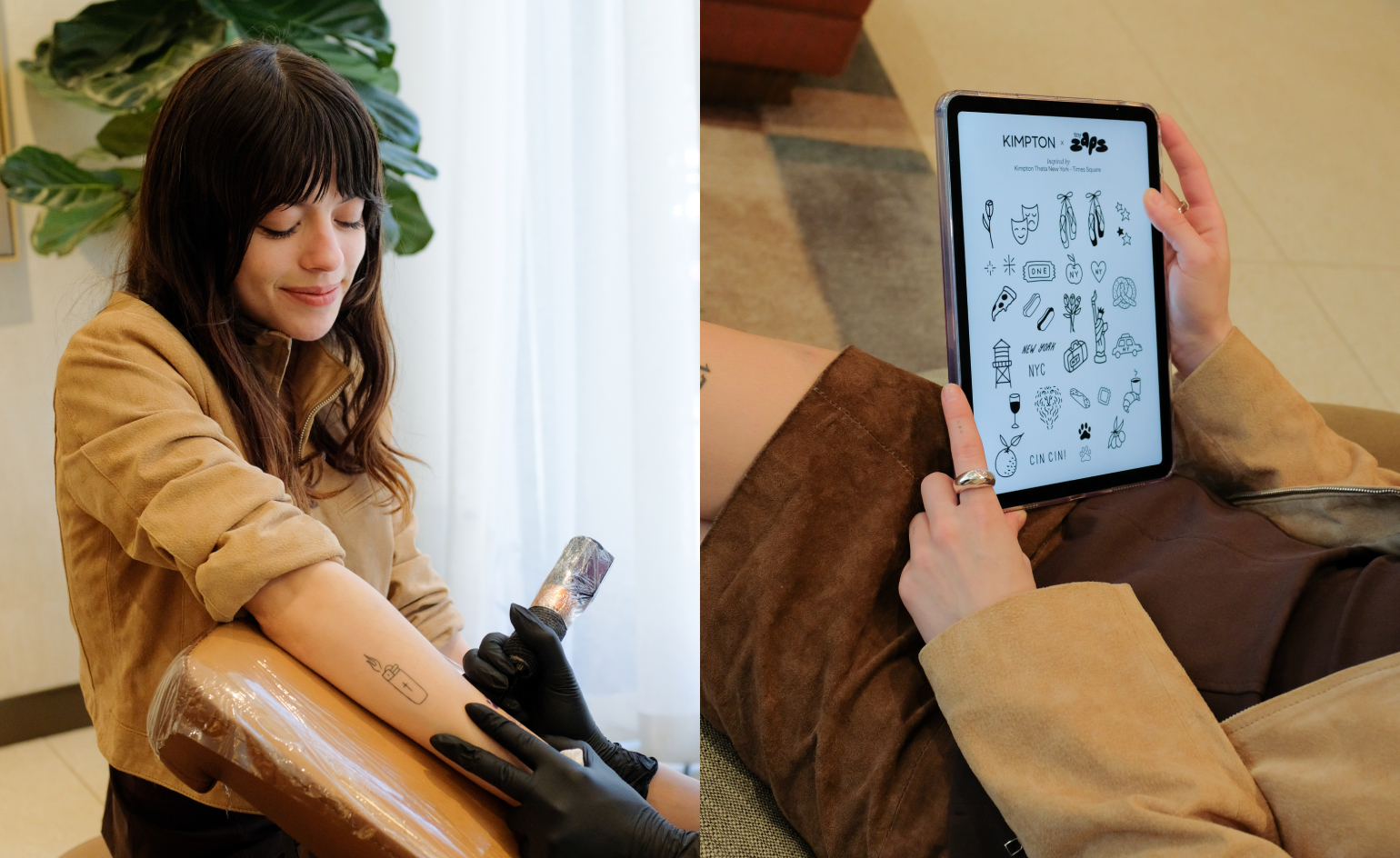 Is a tiny tattoo the best holiday souvenir? Kimpton Hotels think so
Is a tiny tattoo the best holiday souvenir? Kimpton Hotels think soIn partnership with Tiny Zaps, Kimpton Hotels is bringing city-inspired tattoo pop-ups to five U.S. locations
By Sofia de la Cruz
-
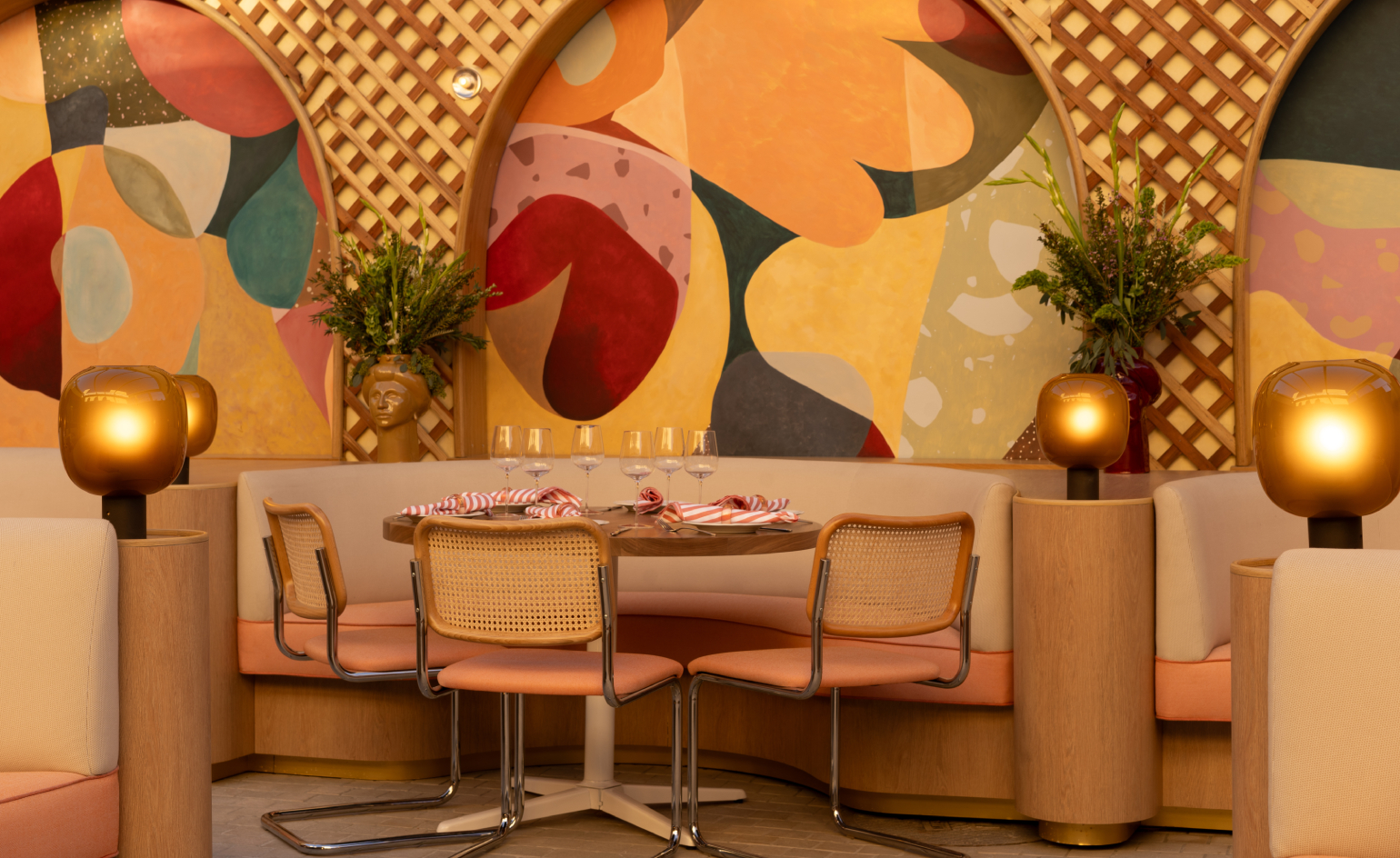 Alba Los Angeles is an Italian vacation disguised as a restaurant
Alba Los Angeles is an Italian vacation disguised as a restaurantThis buzzy NYC import brings a slice of la dolce vita to West Hollywood
By Carole Dixon
-
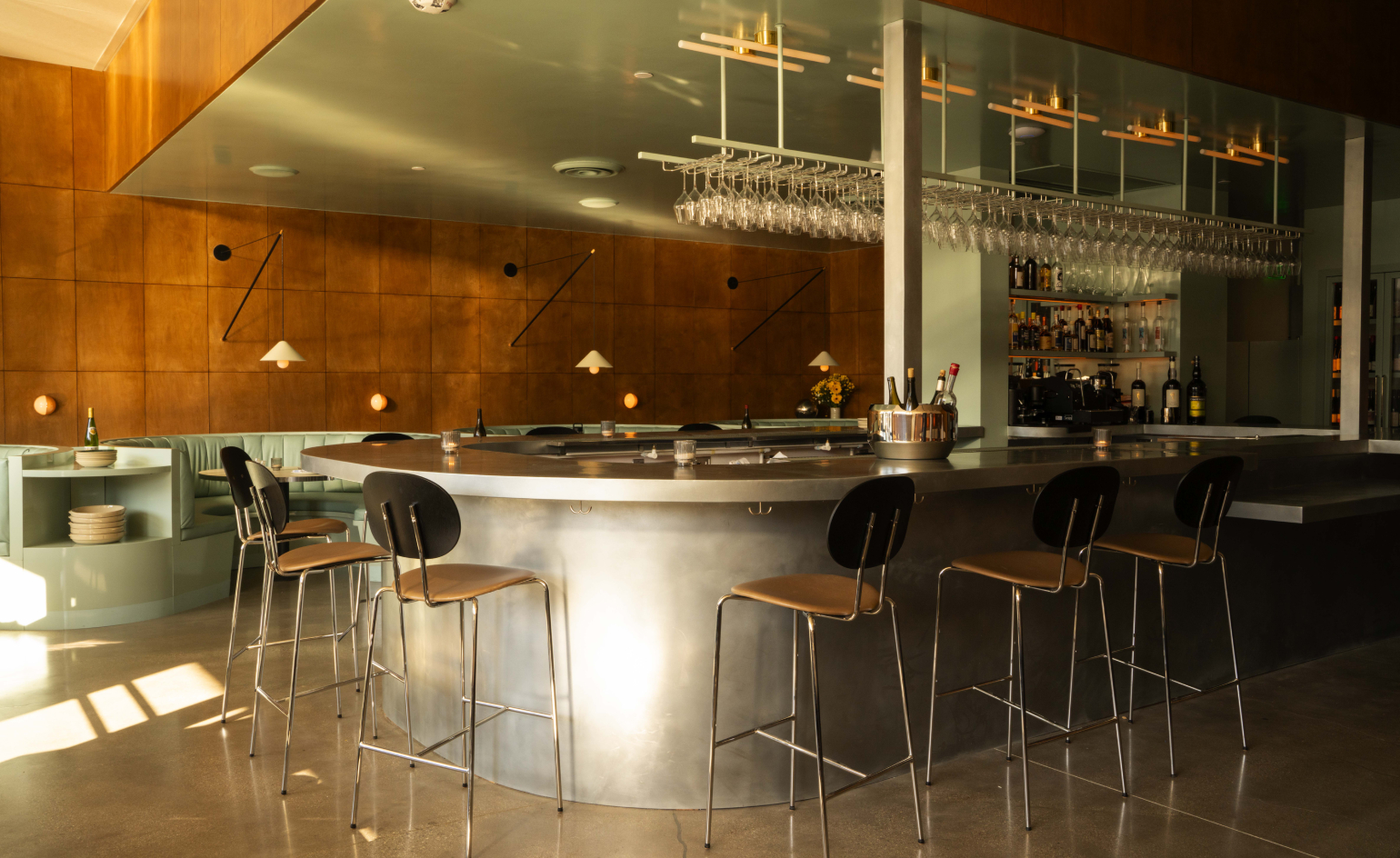 At Bar Etoile, Scandi-chic meets leisurely Los Angeles
At Bar Etoile, Scandi-chic meets leisurely Los AngelesThis new Melrose Park joint mixes art-world references, French bistro vibes and an out-of-this-world martini
By Carole Dixon
-
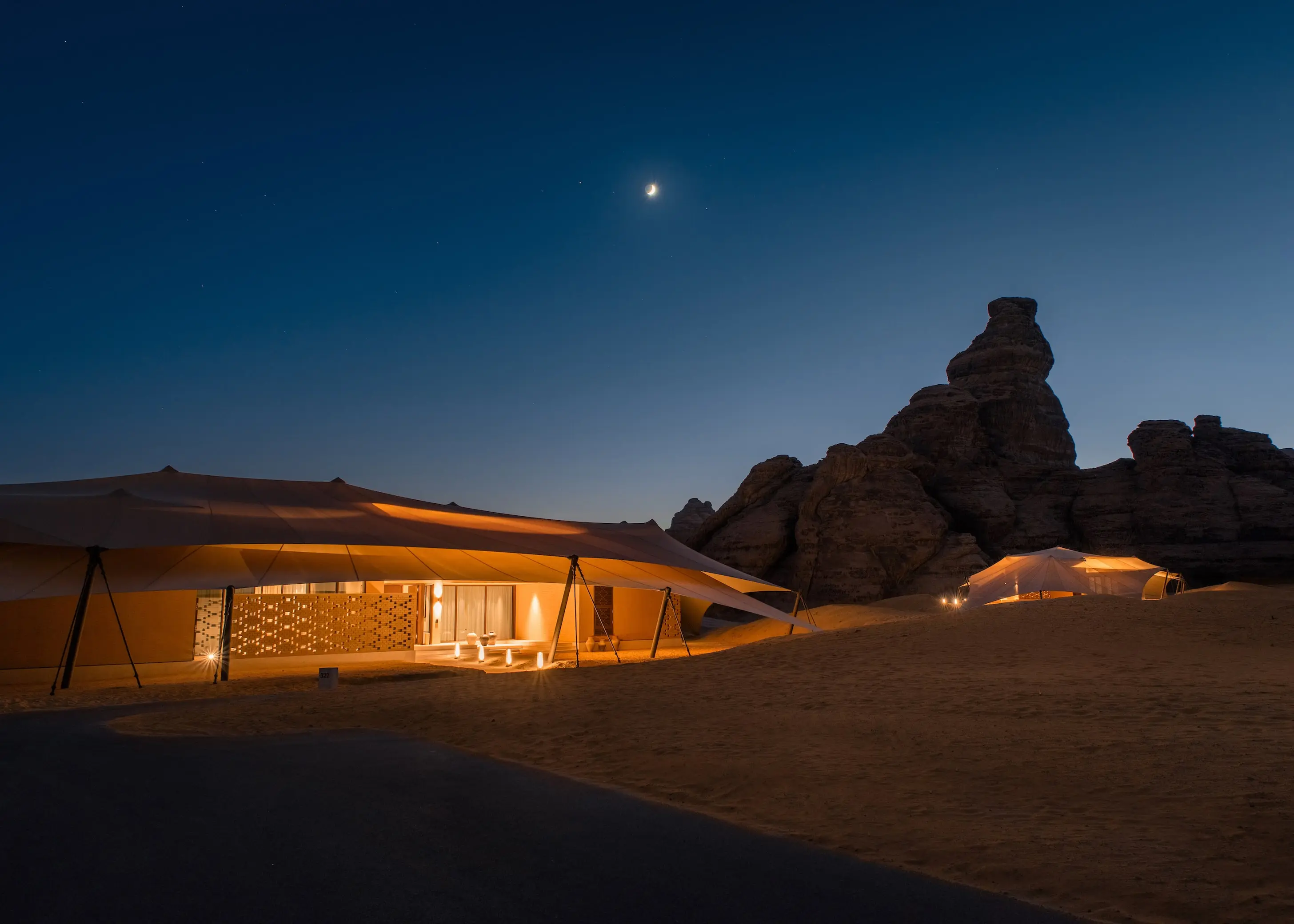 The world's most heavenly destinations for astrotourism in 2025
The world's most heavenly destinations for astrotourism in 2025We're in for a big year for celestial events. These are the world's best hotels to see the cosmos as you've never seen it before
By Anna Solomon
-
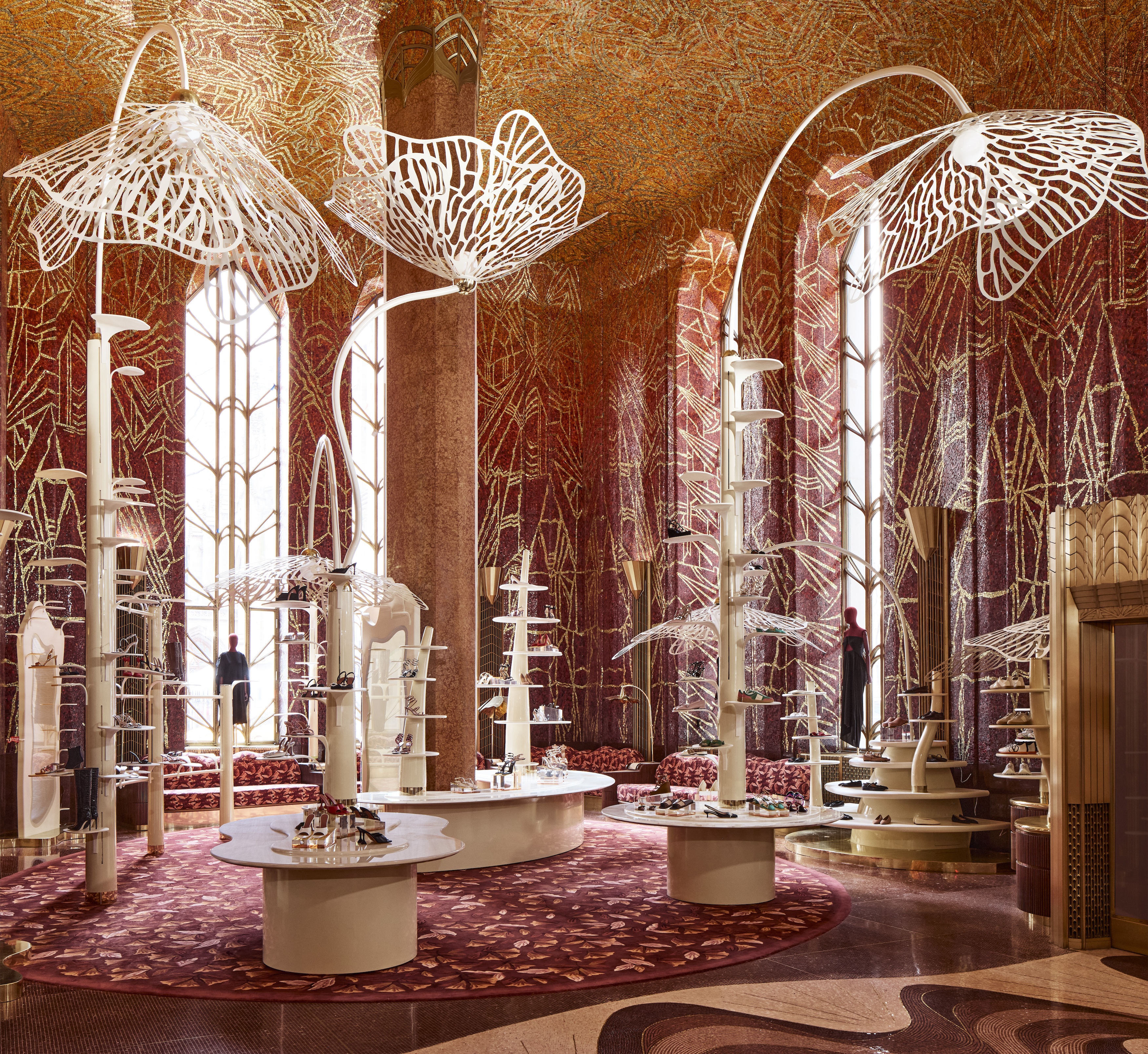 Printemps' New York outpost blooms with possibility – and enchanting design
Printemps' New York outpost blooms with possibility – and enchanting designThanks to designer Laura Gonzalez, this new retail mecca blooms colour, atmosphere and narrative
By Anna Fixsen